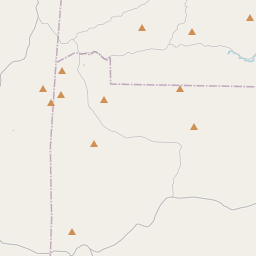Sportsman's Hill







© OpenStreetMap contributors
Site of one of earliest circular racetracks. Crowd gathered within the half-mile track, able to see entire race. Built about 1780 by Col. Wm. Whitley, owner of estate. A fervent patriot, he built track to contrast with the British ones, using clay instead of turf and running races counter-clockwise instead of clockwise. Racing here ended with the Civil War.
Reverse
Whitley House-1785 - Located on the Wilderness Road, it was the first brick house in Ky. Situated so that racetrack was visible from it. Meetings held in fall, bringing elite of region here. After races, which started at dawn, lavish breakfast was served. Whitley, born Va., 1749. Famed Indian fighter; killed, Battle of the Thames, Canada, 1813. Whitley County, Ky., named for him
Loading...
Searching for other points of interest within 3 miles of this location.Kentucky was the site of many important battles during the American Civil War, including the Battle of Perryville, which was the largest battle fought in the state.
About Lincoln County
Lincoln County Timeline
Lincoln County, Kentucky has a rich and fascinating history that spans centuries. The area that is now Lincoln County was originally settled by Native American tribes, including the Shawnee and Cherokee. European exploration and settlement began in the late 18th century, with pioneers from Virginia and North Carolina making their way westward.
The county was officially established in 1780, making it one of the oldest counties in the state. It was named after Revolutionary War General Benjamin Lincoln. In the early years, Lincoln County was a frontier region, characterized by log cabins, subsistence farming, and frequent conflicts with Native American tribes.
During the 19th century, Lincoln County saw significant growth and development. The construction of turnpikes and railroads connected the county to major cities and markets, stimulating economic growth. Agriculture, particularly tobacco farming, became a vital industry, while the Stanford Female College, founded in 1853, provided education opportunities for women.
The county also played a significant role in the Civil War. Despite its primarily pro-Union sentiment, Lincoln County experienced division and violence during the conflict. The Battle of Stanford occurred in December 1864, where Confederate forces led a raiding party in an attempt to disrupt Union supply lines. Ultimately, the county remained under Union control throughout the war.
In the 20th century, Lincoln County continued to evolve. The decline of tobacco farming led to diversification in agriculture, with corn, soybeans, and cattle becoming important commodities. Manufacturing and industry also emerged, contributing to the county's economic growth. Today, Lincoln County is a mix of rural and urban areas, with a rich history and a thriving community.
The county was officially established in 1780, making it one of the oldest counties in the state. It was named after Revolutionary War General Benjamin Lincoln. In the early years, Lincoln County was a frontier region, characterized by log cabins, subsistence farming, and frequent conflicts with Native American tribes.
During the 19th century, Lincoln County saw significant growth and development. The construction of turnpikes and railroads connected the county to major cities and markets, stimulating economic growth. Agriculture, particularly tobacco farming, became a vital industry, while the Stanford Female College, founded in 1853, provided education opportunities for women.
The county also played a significant role in the Civil War. Despite its primarily pro-Union sentiment, Lincoln County experienced division and violence during the conflict. The Battle of Stanford occurred in December 1864, where Confederate forces led a raiding party in an attempt to disrupt Union supply lines. Ultimately, the county remained under Union control throughout the war.
In the 20th century, Lincoln County continued to evolve. The decline of tobacco farming led to diversification in agriculture, with corn, soybeans, and cattle becoming important commodities. Manufacturing and industry also emerged, contributing to the county's economic growth. Today, Lincoln County is a mix of rural and urban areas, with a rich history and a thriving community.
Lincoln County Timeline
This timeline provides a condensed summary of the historical journey of Lincoln County, Kentucky.
- 1780: Lincoln County is established as one of the original three counties in Kentucky.
- 1785: Stanford becomes the county seat of Lincoln County.
- 1792: Kentucky becomes the 15th state in the United States.
- 1862: During the Civil War, Stanford is occupied by Confederate forces.
- 1864: The Confederate forces retreat from Stanford, and the Union army takes control of the area.
- 1949: Lincoln County High School is established.
- 1958: The construction of Lake Cumberland is completed, partially flooding parts of Lincoln County.
- 1994: Lincoln County celebrates its bicentennial.